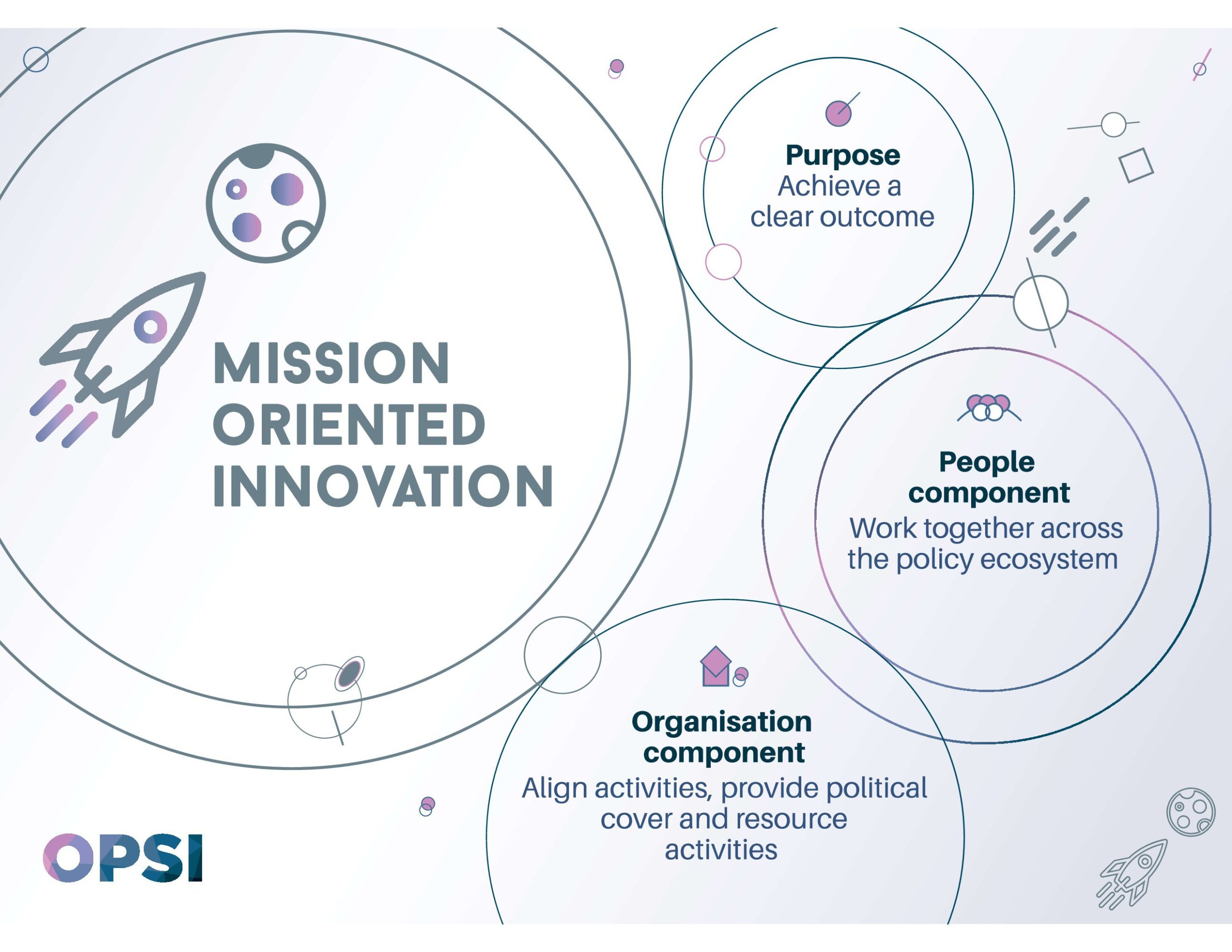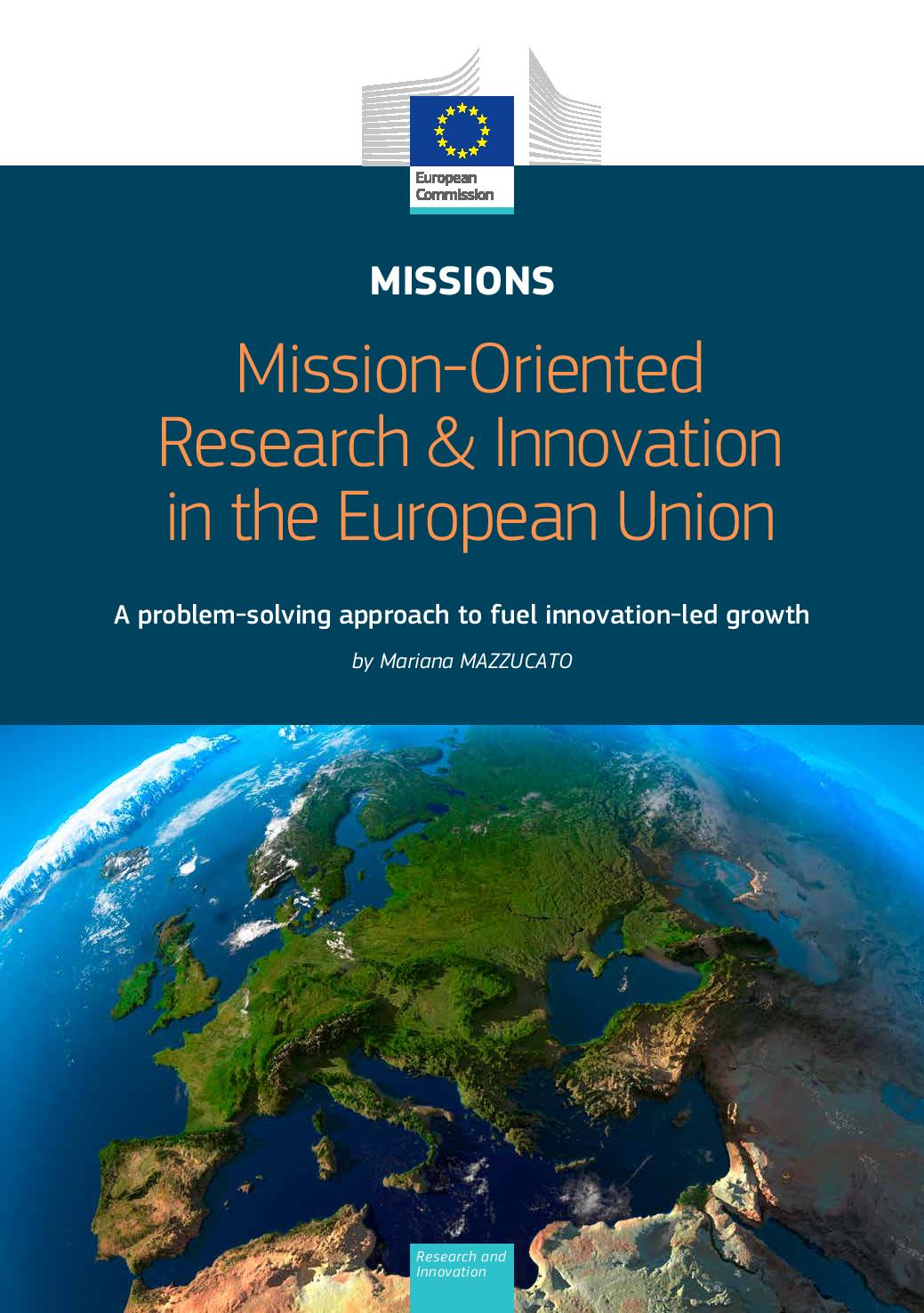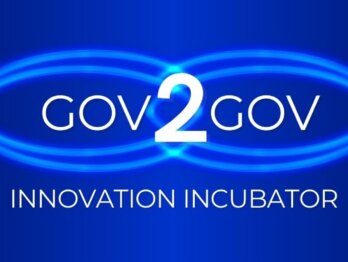Missions: 21st Century Drivers of Innovation?

This post is authored by Rainer Kattel, Professor of Innovation and Public Governance and Deputy Director at IIPP George Dibb, Head of Industrial Strategy and Policy Engagement at IIPP, and Piret Tõnurist, Lead on Systems Thinking and Innovation Measurement at OPSI, OECD. It reflects the specific mission-oriented innovation session at the OPSI 2018 Conference ‘Innovation in Government: Steps, leaps and bounds‘
Countries around the world are seeking to achieve economic growth that is smart, inclusive, and sustainable. Innovation policy debate is shifting from a focus on the quantity or rate of innovation (e.g., number of patents, jobs) towards quality and direction of innovations (e.g., whether innovations help alleviate climate change). This ambition to achieve a particular type of economic growth (smart, inclusive, sustainable) is a direct admission that economic growth can have multiple alternative directions. Exploring this, in this post we present the discussions that took place after the launch of the OPSI innovation facets model earlier this year at the OPSI 2018 conference where OPSI and the UCL Institute for Innovation & Public Purpose (IIPP) ran a workshop to explore what kind of baseline conditions, tools & methods, and evaluation these different innovation facets (including mission-oriented innovation) require.
Missions: from the moon to the ghetto
The unevenness of how societies create knowledge and learn to solve socio-economic challenges was pointed out by Richard Nelson in his seminal The Moon and The Ghetto (1977). Nelson argues that the nature of the know-how used in policy processes determines the way we understand performance in specific policy fields. Getting man to the moon is an achievement that is based on replicable processes of knowledge; raising well-behaved citizens is quite a different story.
Missions provide a policy framework for innovation policy to be structured to solve societal challenges. Missions are a way of engaging research and development to meet global complex challenges and —like John F Kennedy’s mission to travel to the moon—are bold and inspiration, concrete and measurable, and require interdisciplinary collaboration. Importantly, today’s missions differ from the original Moonshot-type missions where the focus on technological challenges. Today, the focus is on both technological and social challenges. This means we have to reinvent the policy toolbox needed to make missions work in the 21st century context.
What are missions?
In a report for the European Commission titled ‘Mission-Oriented Research & Innovation in the European Union’, Prof. Mariana Mazzucato set out how missions can bring together diverse sectors, to foster bottom-up innovation to solve complex challenges. Missions have many benefits; they focus R&D towards outcomes with high societal relevance, they reduce capture of government policies, and they provide a stable environment for public and private investment. Critically, missions provide a fertile innovation environment, in which institutions and aligned around a common goal and “spill-overs” – whether economic, societal, or technological – can be captured. Missions are a new way to think about the dynamic interactions between enabling horizontal policies (framework policies around areas such as education, skills, training, research and innovation) and more outcome-focused vertical policies – areas such as health, environment and energy. Instead of using vertical policies to ‘pick’ sectors or technologies in which to invest, the vertical aspect of missions picks the problem to be addressed, and the outcome at which to aim.

In the Mazzucato report, which has since been adopted by the Commission as the framework for how missions will be formulated in the upcoming Horizon Europe funding program, the director of IIPP set out what a mission should be. There are 5 key criteria that a mission should satisfy; a mission must be:
- Bold, inspirational with wide societal relevance
- A clear direction: targeted, measurable and time-bound
- Ambitious but realistic research and innovation actions
- Cross-disciplinary, cross-sectoral and cross-actor innovation
- Multiple, bottom-up solutions
Should everything be a ‘mission’?
There is a strong connect between missions and blue-sky research and indeed all missions require both basic and applied R&D, and they also change the conversation between them. We will always need curiosity-driven research and the missions framework that IIPP is proposing in not a replacement for this important part of our science base. Missions are a great opportunity to apply technologies that are developed through blue-skies experimentation to broad societal applications, but we must also ensure that we do not neglect the development of general purpose technologies which may not have an immediate mission they fit into, like the internet or machine learning. Thus, the public sector needs to actively balance their innovation portfolios.
OPSI has developed an innovation facets model which involves missions, but also creates room for enhancement of current systems, adaptive and anticipatory innovations. In the field of innovation we do not simply know where and what kind of developments can become important. Thus, to solve problems missions are a great way to instigate innovations that may have relevance far beyond the mission itself, but it is also important to create strategies on entrepreneurial discovery beyond missions (adaption) and to anticipate what is coming next. These activities are needed to avoid over-reliance of directionality and thus, lock in. The key question is what should the proportion of activity be in public sector innovation portfolios for each facet.

What we learned at the 2018 OPSI conference
At the joint OPSI-IIPP workshop at the OPSI conference we discussed with experts three questions connected to the baseline conditions of mission-oriented innovation, tools and methods needed for the former and the evaluation that needs to follow. We learnt that:
- Moonshot type mission-oriented policies of the past relied on strong external mobilising factors such as existential threats to national security. Modern missions aimed at solving ‘grand challenges’ may not be formed in this environment and thus political leadership, socio-economic coalitions and capacities and capabilities within the public sector need to be mobilised in order to embark on mission-oriented policies. The baseline condition that participants identified we need to implement missions is a strong, attractive vision of what a mission can achieve that is easily communicated and will drive public engagement.
- Participants felt that there wasn’t a strong link in the minds of citizens how innovation funding and policy can actually impact their day-to-day lives, and a vibrant articulation of how a mission for clean air or for resource efficiency that really resonates is critical for a missions approach. This obviously feeds into funding and metrics to deliver and evaluate the mission policy.
- The participants agreed that one very positive development was that government’s had accepted that there is a problem, that complex or “wicked” grand challenges exist that have no single solution and new working methods to deal with the former are needed. This admission means that governments have started to look seriously at alternative innovation frameworks to help direct innovation towards these issues. The biggest failure in this space identified by participants is that the governments themselves are complex and siloed with very little horizontal communication. Many people taking part even went as far as to agreed that this uncoordinated governance induce hostility between siloed departments. This structural complexity means that governments are clearly not prepared organisationally for the requirements of network management that will be needed to successfully manage missions.
- Regarding evaluation, the general consensus was that mission-oriented innovations need clear feedback measures, thus, the direction through defining missions has to be specific enough that everybody can say if actions are contributing to the goal or not. Yet, evaluation also has to be adaptive to the specific characteristics of the mission, take into account also the contribution of non-governmental actors and also capture the positive side-effects of missions (the innovations that develop through the mission agenda, but are deployed outside of the direct mission remit). Also, evaluation tools and methods should guard governments against lock in and tunnel vision in situations where for example technological development makes specific missions irrelevant. The reality in governments is, however, based on linear input/output metrics that do not align well with missions. This means that clear directions in innovation are not easy to build up as there is no good evidence to back up variety of missions that are across-government by nature.

What’s next?
IIPP is continuing to develop the missions framework and implement this framework into policy making in collaboration with public servants at the European federation level, the national level in the UK through the government’s Industrial Strategy, and at the local/regional level through international collaborations. We will be publishing several important publications in this area over the next few months: the UCL Commission on Mission Oriented Innovation & Industrial Strategy (MOIIS commission) co-chaired by Mariana Mazzucato and Lord David Willetts that is working with the British government on how a mission approach can be embedded in the Industrial Strategy will be publishing an interim policy report in January and a final report on the implementation of a missions approach in May. Additionally, Prof Mazzucato is expecting to publish a second report for the European Commission in early 2019 titled Governing Missions. This report will focus on how a mission approach can be governed in three key areas; finance and funding, public sector capabilities, and civic engagement.
In line with IIPP’s work, the OECD will look into the assessment of broader innovation portfolios of government and work on how governments can support different innovation facets. OPSI together with other OECD partners in the STI community will explore what are effective ways to build up, support and sustain mission-oriented innovations and how to strategically balance directed innovation action with more adaptive and anticipatory work. In this work, OPSI will draw on inputs from IIPP and the experience of OECD member states. Hopefully, a fruitful partnership will emerge between OECD and UCL in 2019 and beyond on this topic. The joint workshop at OPSI 2018 conference was definitely a step in the right direction.












